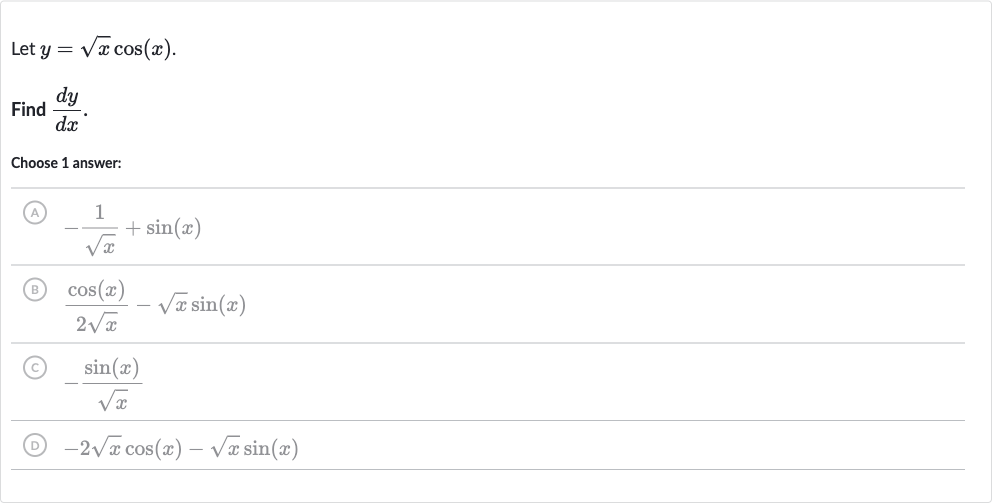AI tutor
Full solution
Q. Let .Find .Choose answer:(A) (B) (C) (D)
- Define and : Using the product rule, which states that , let's differentiate .Let and .
- Differentiate : Differentiate with respect to to get .
- Differentiate : Differentiate with respect to to get .
- Apply product rule: Now plug , , , and into the product rule formula.
- Simplify expression: Simplify the expression.
More problems from Multiplication with rational exponents
QuestionGet tutor help
QuestionGet tutor help
QuestionGet tutor help
QuestionGet tutor help
QuestionGet tutor help
QuestionGet tutor help
QuestionGet tutor help
QuestionGet tutor help
QuestionGet tutor help

